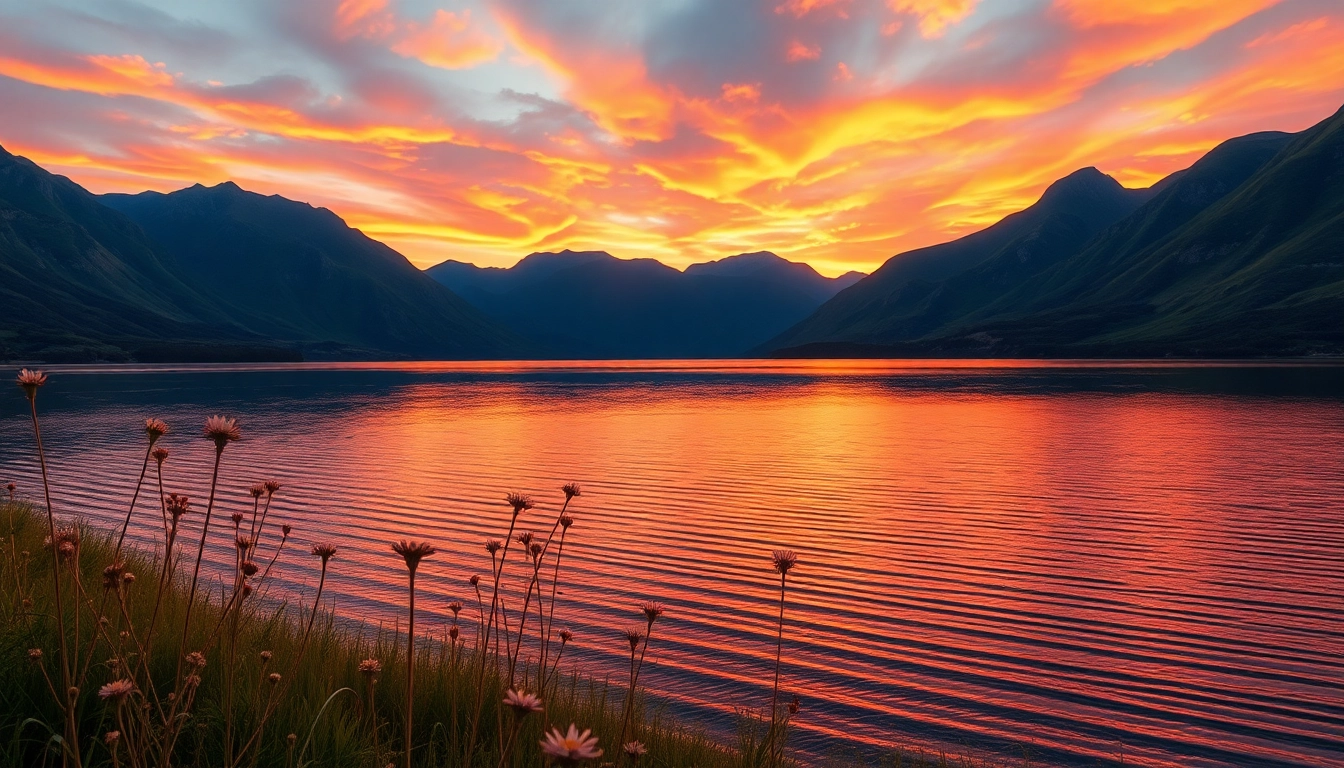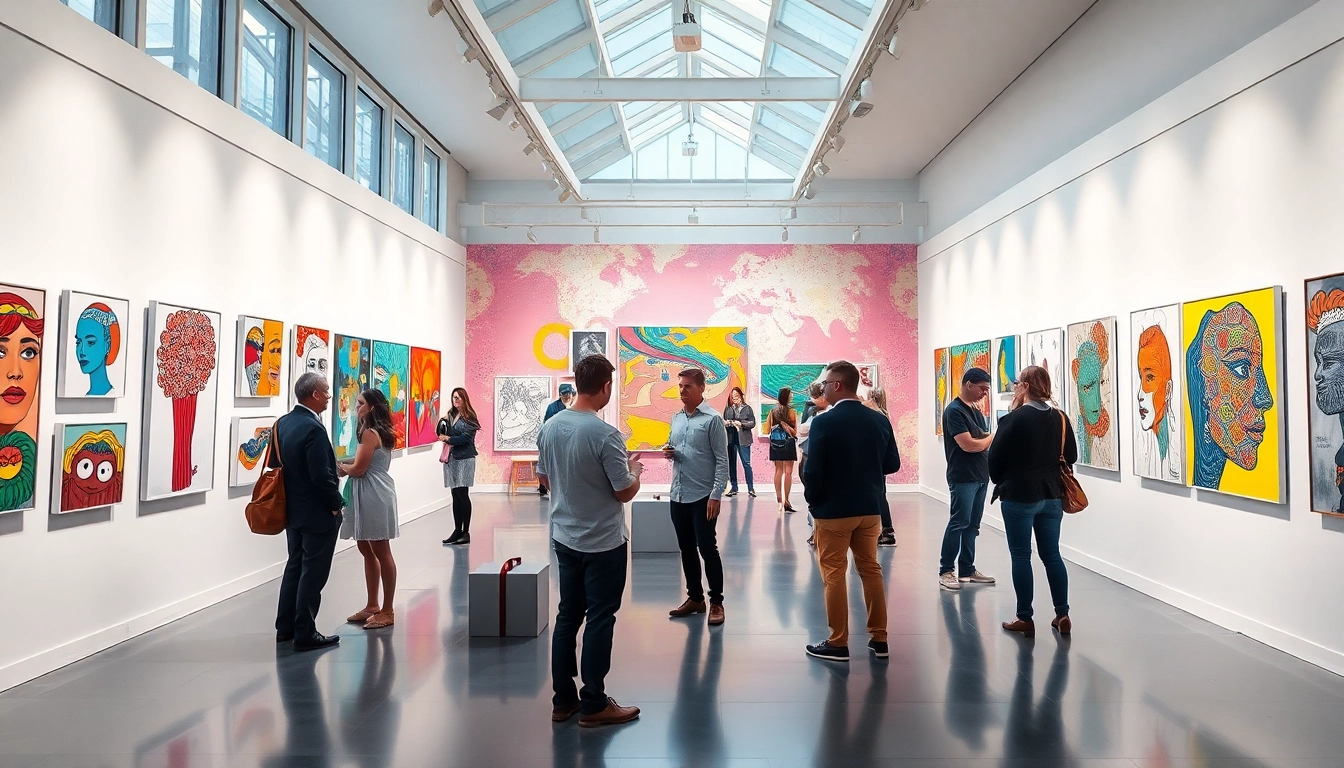
Understanding Landscape Paintings
Definition and Characteristics of Landscape Paintings
Landscape paintings represent a genre of art focusing on the depiction of natural scenery. This can include mountains, valleys, trees, rivers, and forests. The primary objective of landscape artwork is to capture the beauty of the natural world, often reflecting the innate feelings the artist has toward the scenery. These works can invoke a sense of tranquility or adventure, depending on the elements included and the artistic techniques employed.
Landscape paintings have distinct characteristics that set them apart from other artistic genres. They traditionally emphasize composition, color, light, and atmospheric effects, providing depth and realism. The artist’s choice of medium—be it oil, watercolor, or acrylic—also plays a pivotal role in expressing the moods associated with different landscapes.
The Evolution of Landscape Paintings Through History
Landscape paintings have undergone significant transformation since their inception. Initially, landscapes were secondary elements in religious or historical paintings. It wasn’t until the Renaissance that landscape began to gain prominence. Artists like Leonardo da Vinci incorporated detailed backgrounds, showcasing their development in landscape imagery.
The 17th century marked the rise of Dutch painters, such as Jacob van Ruisdael, who portrayed dramatic landscapes filled with intricacy and emotional nuance. This was followed by the Impressionist movement in the late 19th century, with artists such as Claude Monet and Pierre-Auguste Renoir who captured the fleeting effects of light and color in outdoor scenes.
In modern times, landscape paintings have embraced a myriad of styles, from realistic depictions to abstract representations, suggesting the deepening complexity of how humanity perceives nature. Today, landscape paintings can belong to a range of art movements, reflecting various personal interpretations of the world around us.
Key Elements in Landscape Paintings
Understanding the essential components of landscape paintings can enhance one’s appreciation of this genre. Key elements include:
- Composition: This refers to how elements are arranged within the artwork, guiding the viewer’s eye and creating balance or tension.
- Color: Color choices affect the emotional tone of a painting. Warm colors can evoke comfort and warmth, while cool colors may convey calmness or melancholy.
- Light: The portrayal of light plays a crucial role in depicting time of day and atmospheric conditions, enhancing realism or mood.
- Texture: Artists use various techniques to portray surface qualities, highlighting the contrast between different elements, such as rugged mountains compared to smooth water.
- Perspective: This gives depth to the painting, allowing the representation of vast landscapes and altering how the viewer perceives distance and space.
Famous Landscape Paintings to Inspire Your Collection
Iconic Landscape Paintings by Renowned Artists
Throughout history, certain landscape paintings have become iconic, setting standards for beauty and technique. “The Oxbow” by Thomas Cole exhibits the sublime power of nature, while “Impression, Sunrise” by Claude Monet critiques the process of capturing light through spontaneous brushwork. Other notable works include “Starry Night” by Vincent van Gogh, with its turbulent sky, and “The Hay Wain” by John Constable, which presents a serene rural scene.
How Famous Landscape Paintings Influence Modern Art
Famous landscape paintings continue to influence contemporary artists, providing templates for exploration in their own practices. The Impressionists opened doors for abstraction, enabling modern painters to experiment with color and form rather than strict representation. Artists today might draw inspiration from the emotional depth of Turner’s work or the delicate simplicity found in the landscapes of the Northern Renaissance.
This evolution promotes an ongoing dialogue in modern art, as techniques and themes from famous works re-emerge in contemporary practices, infusing new life into the landscape genre.
Celebrating Regional Features in Landscape Paintings
Regional features often inspire landscape painters, providing a sense of identity and connection to place. The unique characteristics of a location—be it the rolling hills of Tuscany, the fjords in Norway, or the deserts in Arizona—offer artists endless subject matter. This celebration of local features helps to inform audiences about different cultures and environments while establishing a context that is both personal and universal.
Techniques Used in Creating Landscape Paintings
Common Mediums for Landscape Paintings
Artists choose from a wide array of mediums to create landscape paintings. Oil paint, renowned for its versatility and depth of color, remains a popular choice among traditional landscape artists. Its slow drying time allows for intricate blending—ideal for capturing light and atmospheric effects. Watercolors, on the other hand, are often appreciated for their transparency and spontaneity, lending a fluidity to landscape depictions.
Acrylics offer a more modern approach, drying quickly and allowing for vibrant colors, whereas mixed media can combine various techniques and materials for unique textures and effects. The choice of medium greatly influences the final emotion and storytelling within a landscape piece.
Brushwork and Color Theory in Landscape Paintings
Brushwork techniques play a pivotal role in the texture and expression of landscape paintings. For instance, broader strokes may be used for large areas, resembling fields or skies, while finer brushes help to detail trees and foliage. Each artist’s technique adds individual character to their work, becoming a signature aspect of their landscape interpretation.
Color theory further enhances this expression. Artists often utilize complementary colors to create vibrancy or muted palettes for more somber moods. Understanding the interaction between colors provides artists the means to evoke specific emotions in the observer, allowing landscapes to resonate on a more personal level.
Mixing Techniques: Combining Styles in Landscape Paintings
Many contemporary artists choose to blend various painting styles to create captivating landscape artworks. For example, combining realism with abstract elements can generate stunning contrasts, leading to unique visual narratives. Techniques such as collage and the incorporation of digital elements often bridge tradition and modernity, challenging viewers’ perceptions of landscape.
By exploring mixed techniques, artists not only differentiate themselves from conventional methods but can also express complex themes concerning nature, environment, and perception, creating layers of meaning in their works.
Choosing the Right Landscape Paintings for Your Space
How to Select Landscape Paintings Based on Room Aesthetics
Selecting landscape paintings that harmonize with the aesthetics of a space is crucial to maintaining consistency in design. For instance, a tranquil landscape featuring a serene lake may fit perfectly in a calming bedroom, while dynamic scenes with vibrant colors could energize a lively living room. Consider the color palette of your interiors; landscape paintings can complement or contrast design elements, enhancing the overall atmosphere.
Creating a Thematic Gallery of Landscape Paintings
Curating a thematic gallery of landscape paintings can create a compelling visual narrative within a space. By grouping works that share similar subjects, styles, or color palettes, you can guide viewers through a journey, highlighting varied aspects of nature and place. Popular themes may include urban landscapes, coastal scenes, or pastoral settings, each evoking distinct sensations and experiences.
Ensure to mix different sizes and orientations to maintain dynamic visual interest while encouraging exploration of each piece in the collection.
Considering Size and Scale in Landscape Paintings
The size of the landscape painting is pivotal in determining its impact on a room. Larger paintings serve as focal points, drawing immediate attention and can make a bold statement. They are often suitable for expansive wall spaces such as above sofas or command attention in entryways. Conversely, smaller works can create clusters or balance larger paintings, inviting viewers to engage closely with details.
When selecting the size, consider how the piece will relate to furnishings and architectural features within the room. Proper scaling enhances both aesthetic appeal and functional space considerations.
Where to Buy Quality Landscape Paintings
Finding Reputable Art Dealers for Landscape Paintings
When looking to buy landscape paintings, it’s important to find reputable art dealers. Established galleries often provide not only a curated selection but also insights into the authenticity and provenance of the pieces. Engaging with local galleries, attending art fairs, and networking with artists can uncover unique opportunities to acquire quality artworks.
Art dealers often have a deep understanding of the art community and can guide selections based on one’s budget and aesthetic preferences.
Online Platforms for Purchasing Landscape Paintings
The digital age has transformed how we purchase art, granting access to a global market for buyers. Numerous online platforms offer extensive collections of landscape paintings, allowing you to browse a variety of styles and price points from the comfort of your home. When considering online purchases, check the site’s credibility and art return policies, ensuring satisfaction with your purchase.
Many platforms also feature user reviews, providing clarity and confidence when selecting pieces from emerging or established artists alike.
Understanding Prices and Value for Landscape Paintings
The price of landscape paintings can vary significantly based on several factors, including the artist’s reputation, the medium used, and the dimensions of the work. Collectors investing in established artists can expect to pay higher premiums compared to emerging artists. It’s essential to understand the market and evaluate the long-term value of artworks.
Collecting landscape paintings can be a rewarding experience, both aesthetically and financially. Comprehensive knowledge of pricing trends in the art market will assist collectors in making informed decisions, ensuring each investment aligns with their personal and aesthetic goals.






